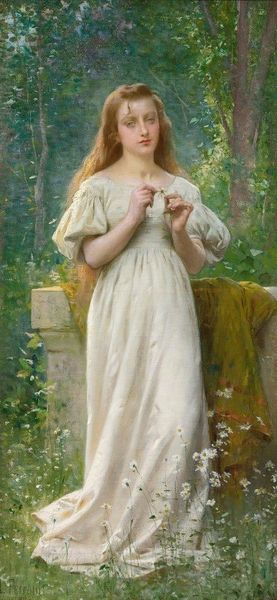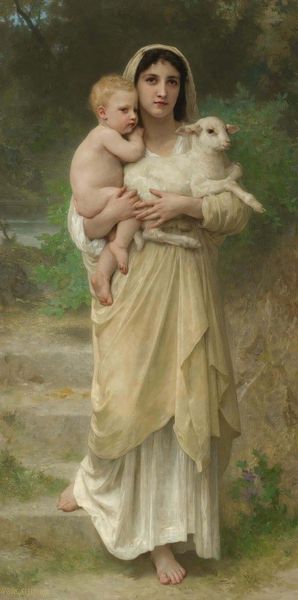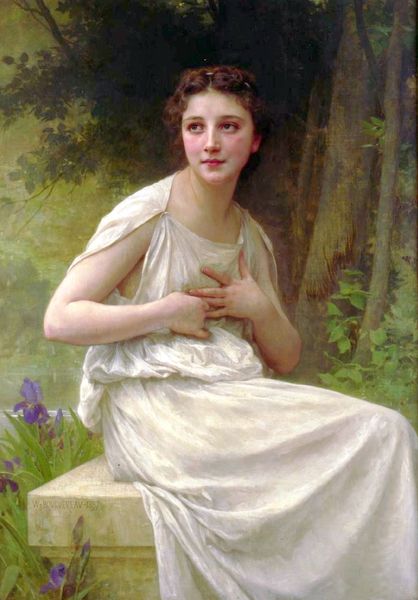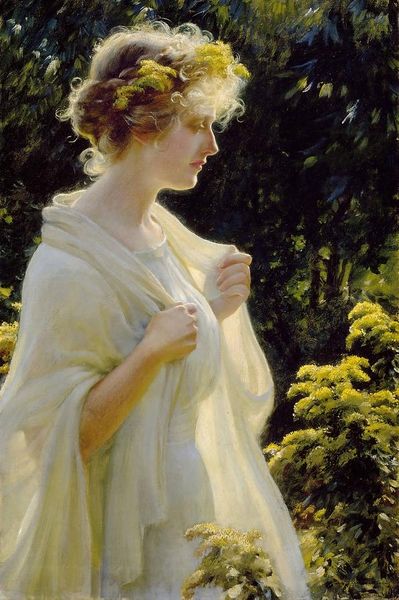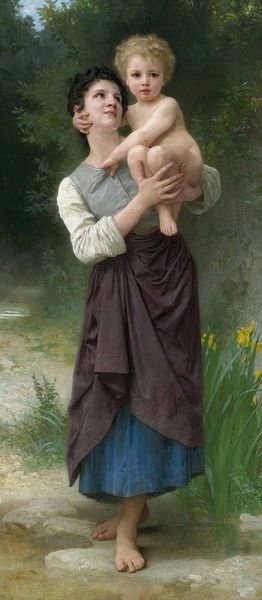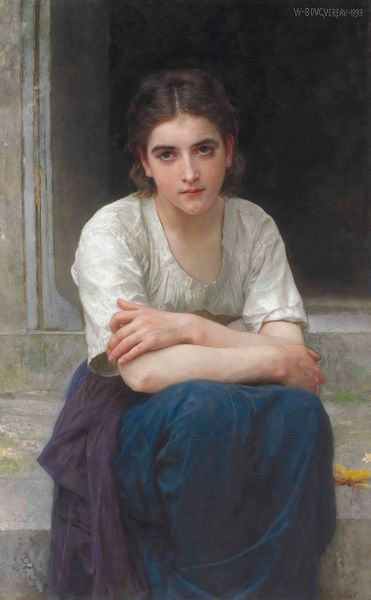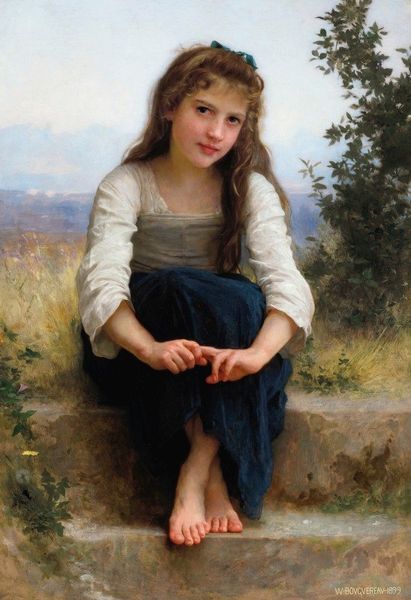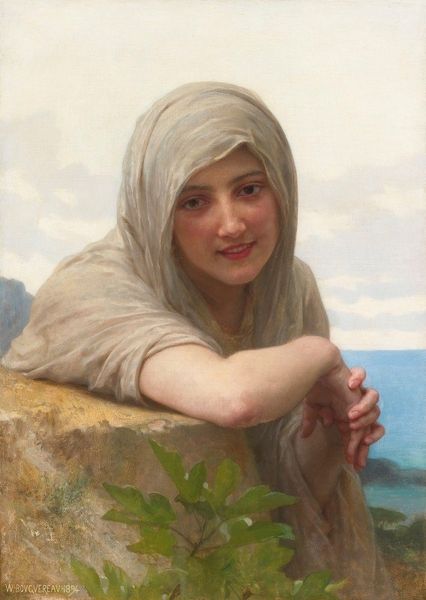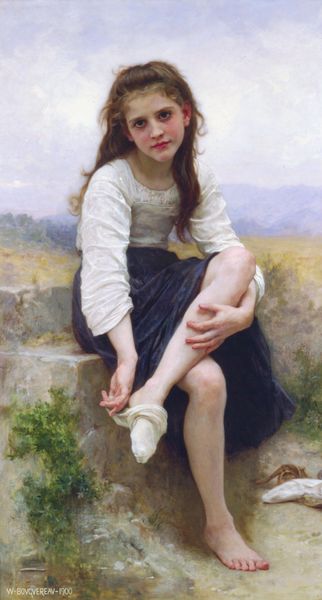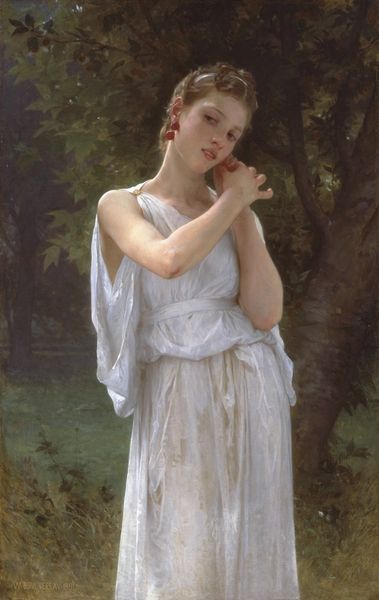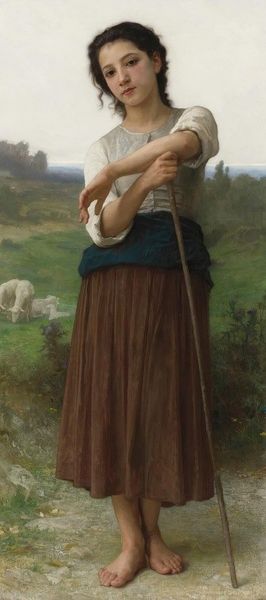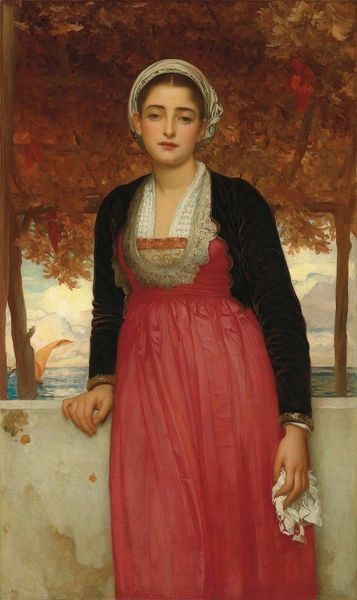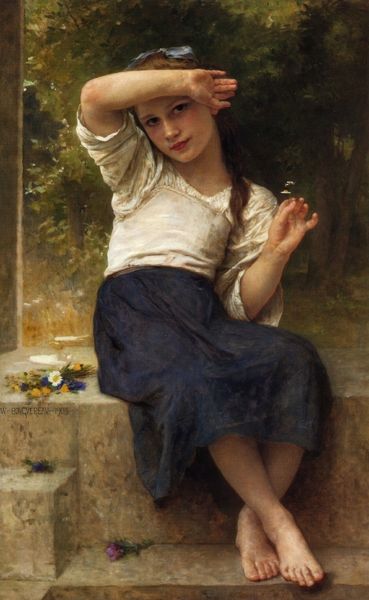
Copyright: Public Domain: Artvee
Editor: This is William Bouguereau's "L'Attente," painted in 1901 with oil. The woman's serene expression, juxtaposed with the implied waiting, makes me wonder what narrative Bouguereau is trying to construct. What strikes you about this piece? Curator: What stands out to me is the context of academic art in the late 19th and early 20th centuries. Bouguereau, a celebrated figure in his time, championed classical ideals and technical virtuosity against the rising tides of modernism. He sought to maintain the traditions of the salon system in France, exhibiting frequently at the Paris Salon and adhering to its expectations regarding subject matter and style. This woman in "L'Attente" aligns perfectly with academic art. Considering the historical context, what message do you think it sends by using an idealized portrayal of feminine beauty rooted in classical art? Editor: Perhaps a resistance to the changing art world? Was he intentionally turning his back on Impressionism and other movements? Curator: Precisely. It's a conscious assertion of established values in the face of a changing socio-political landscape. The salons were cultural gatekeepers, so the paintings that appeared there affirmed certain views of society. Notice how the female figure evokes Renaissance depictions of Venus or nymphs. In what ways might the classical imagery contribute to or challenge the representation of women during that period? Editor: It's almost like a fantasy—a timeless representation, far removed from the realities of women's lives at the turn of the century. It makes me wonder if the focus was less on genuine depiction and more about reaffirming ideals. Curator: Yes, but it's crucial to remember this was a period of significant social change for women. So by embracing classical art, the politics of imagery became a stage to play with the societal position of women. In any case, I feel my understanding of "L'Attente" deepened as we looked into it through a cultural and historical lens. Editor: Mine too. Thanks! I appreciate learning to see this artwork through the lens of cultural institutions and historical shifts.
Comments
No comments
Be the first to comment and join the conversation on the ultimate creative platform.
